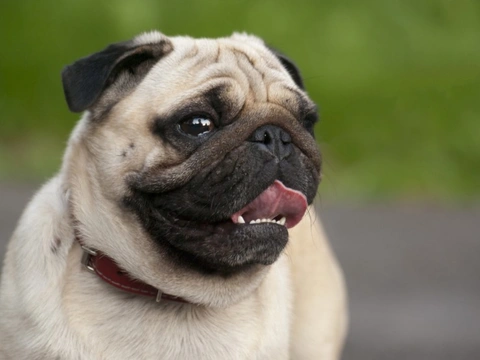
All about the dog’s teeth and bite
The mouth of the dog when it comes to their teeth, how the teeth sit in the jaw and the general shape of the mouth is described as the dog’s “bite”, and this is the term used to describe how a dog’s teeth come together in terms of their position in the mouth and the way that they work.
As the shape and size of the muzzle can vary considerably across different breeds and sizes of dog, a lot of different terms and phrases are also used in descriptions of the dog’s bite, and it is a good idea to familiarise yourself with some of the basic terms, and learn to identify what form your own dog’s bite takes.
In this article we will look at the teeth and bite of the dog in more detail, covering the normal position of the teeth, different types of bite, and some of the problems that unusual bites can cause. Read on to learn all about the dog’s teeth and bite.
What is the dog’s bite?
The bite itself refers to how the upper and lower teeth meet when the mouth is closed in the normal position, which comes down to a combination of three things-the number of teeth, the shape of the jaws, and the position of the teeth. The bite is something that show judges consider in comparison to the breed standards when judging pedigree dogs in the ring, and the bite is also something that can affect the functionality of the dog’s jaw, and how it works.
The normal bite
Normal adult dogs of the majority of breeds have a total of 42 teeth in their upper and lower jaws combined, made up or a combination of four canines, ten molars, sixteen premolars and twelve incisors.
The most common normal and healthy bite of the dog is known as a scissor bite, and a scissor bite occurs when the upper and lower jaws meet neatly with a slight overlap of the bottom teeth by the top teeth, but no exaggerations. Viewed from the side, the molars and premolars of the upper and lower jaws should fit neatly into each other like the teeth of a zip, with no sizable gaps nor overcrowding visible.
The level bite
A level bite is very similar in appearance to a scissor bite, but rather than the slight overlap of the bottom teeth by the top, in a level bite, the top and bottom teeth meet exactly, with no overlap of the teeth other than the canines.
The fact that the teeth meet exactly rather than slightly overlapping means that over time, the dog’s adult teeth will wear against each other due to continual contact, which can potentially lead to problems in later life. Nevertheless, the breed standards for some dogs call for a level bite rather than a scissor bite.
The overbite
An overbite occurs when the dog’s top jaw is significantly longer than their lower one, leading to the top teeth protruding over the bottom ones by quite some degree. In many breeds, this is classed as a fault, but how much of a fault will depend on the degree of protrusion.
The underbite
An underbite occurs when the lower jaw protrudes further than the upper one by a noticeable amount, and again, this is generally classed as a fault, although it is common within some breeds nonetheless, including brachycephalic breeds with short muzzles like the Bulldog and the Pug.
The wry bite
A wry bite occurs when one side of the dog’s jaw is longer than the other, leading to a lopsided appearance to the bite that is often evident even when the mouth is closed. This can lead to slobbering and drooling, issues with closing the mouth normally and sometimes, difficulty in eating and drinking normally as well.
The open bite
An open bite is the term used to refer to a dog whose teeth do not meet or overshoot at the front at all (other than the canines) leading to a gap being present between the top and bottom front teeth even when the mouth is closed. The open bite may in some cases be seen when the mouth is closed, due to the size of the gap, but this does not have to be the case.
The primitive mouth
A primitive mouth is the term used to refer to a dog whose teeth are all pointed like the canines, rather than having a combination of pointed canines and flat surfaced teeth as is usually the case. The hairless variant of the Chinese Crested dog breed is one that commonly has a primitive mouth, but the powderpuff or furry version of the same breed does not.
Malocclusion
Malocclusion or maloccluded teeth are teeth that are crooked, grow in an abnormal direction, or that grow in the wrong location, leading to an unusual bite due to the shape of the teeth or the position that they are growing in. While many dogs have the odd malocclusion or similarly unusual dentition and do not suffer from any problems as a result of this, other dogs may need dental surgery to correct the issue if it causes them a problem.
The crowded mouth
A crowded mouth is one that has extra teeth, often growing above or below the normal teeth and sometimes, crowding them out of the way. Again, this may not prove to be a problem for the dog in question, but if it does lead to dental issues, some of the additional teeth may need to be removed.



